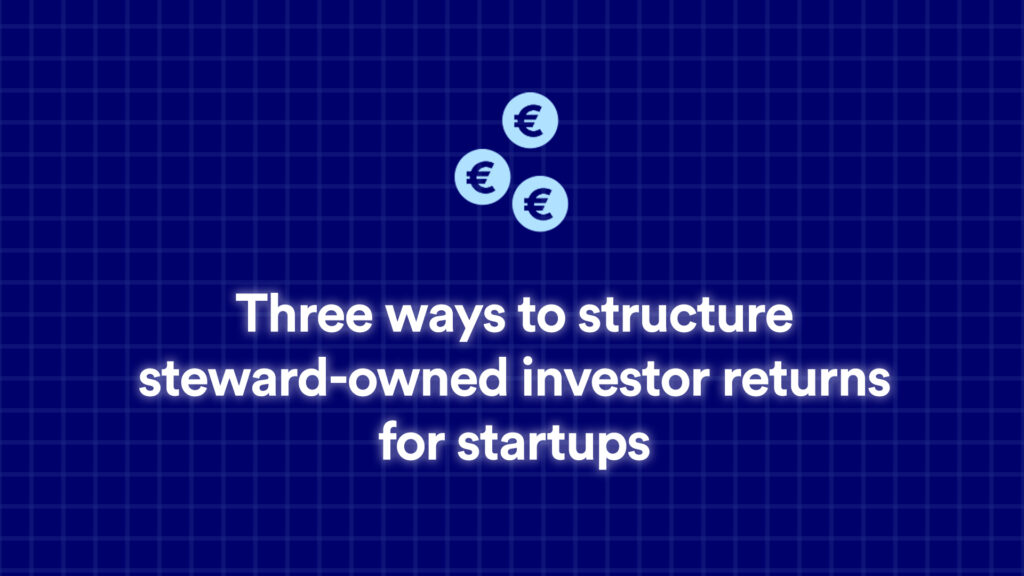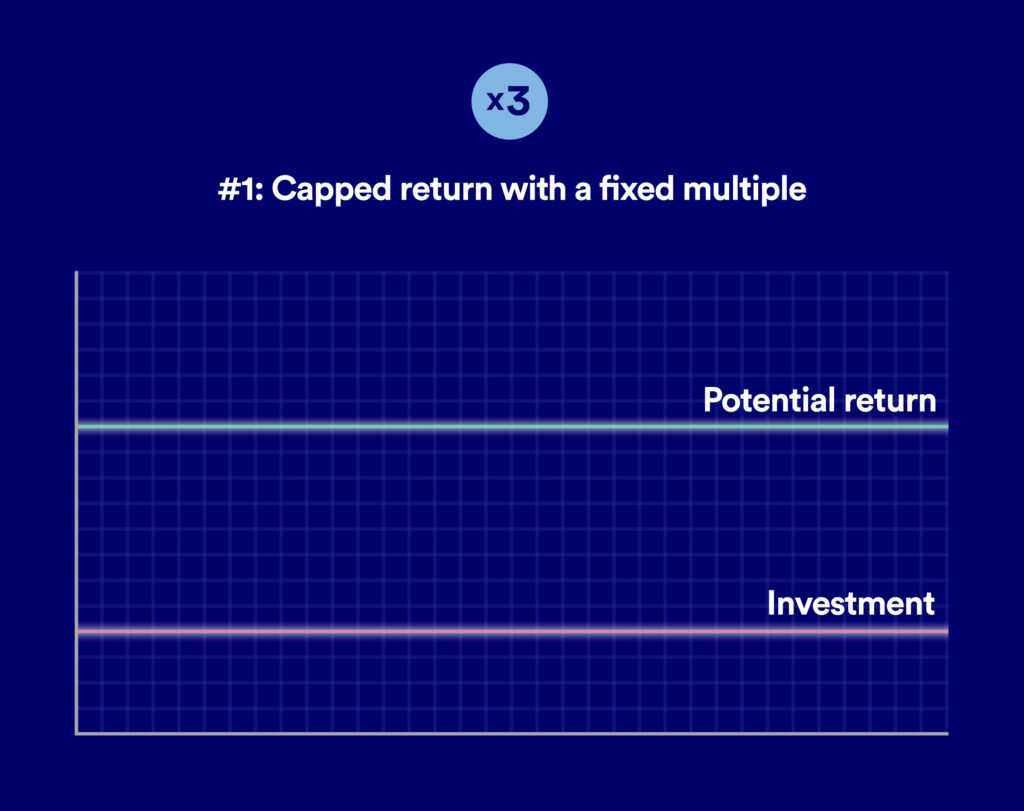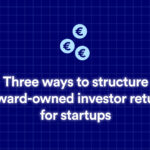
How can investors structure their investment in steward-owned startups? This article provides an overview of three ways to structure investor returns. It’s a follow-up from a previous article (in Dutch) on investing in steward-owned startups.
One of the two principles of steward-ownership is that profits serve the purpose. While adhering to this principle, investors, founders and other stakeholders can be compensated for their contributions. To make sure profits serve the purpose, their compensation will never be at the expense of the purpose of the company. And at most steward-owned companies, the compensation for investors is capped at a certain maximum. After reaching this maximum, all future profits can be used to further serve the purpose of the company.
Most steward-owned startups that raise equity funding from investors choose to issue shares with limited profit rights, resulting in the capped return for investors (and founders).
Three models to structure investor returns:
1. Capped return with a fixed multiple

In a ‘capped return model’, investors receive shares with dividend rights and a fixed maximum return (a capped return). At the time of investment, a risk assessment and cashflow prognosis can help to analyse what a fair capped return would look like. In this model, the annual return (IRR) is depending on the time it takes for the return to be paid out. The shorter that period, the higher the annual return. An example of a company using this model is marketplace software provider Sharetribe. Want to take a deep dive into the legal details? Read article 5 in the shareholders agreement of Sharetribe.
2. Yearly dividend on outstanding capital

In a ‘yearly dividend model’, investors receive shares with a fixed dividend on outstanding capital. If the company is not able to payout the dividend (for instance during the first years), the dividends will be added to the outstanding capital, to take account of the time value of money. The company will always have the right to buy back the shares at the outstanding capital plus accumulated unpaid dividends. An example of a company using this model is sustainable plant webshop Sprinklr. Deep diving again? Sure: Read article 26 in the articles of association of Sprinklr (in Dutch) or read a blogpost on their website (also in Dutch).
3. ACE return (Appreciating Capped Economic return)

In the ‘ACE return model’, elements of both of the above concepts are combined: investors receive a capped return, however this will increase over time (for instance after a number of years) to take account for the time value of money. An example of a company using this model is online platform for collective action Alkemio. Read more about the ACE return model on Alkemio’s website or deep dive into their shareholders agreement, Schedule C (at the end).
In all three models, a share entitles an investor to a portion of the profit of the company, with the company having the right to buy back the shares, after which further profits will be used to further the purpose of the company. This type of equity mimics some dynamics of a loan and is therefor also referred to as ‘debt like equity’.




